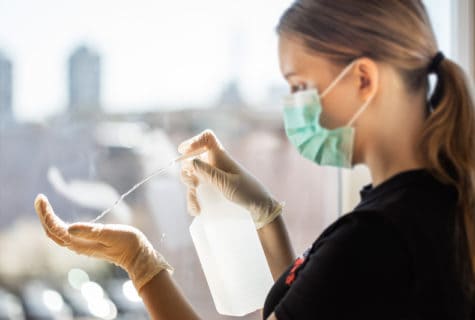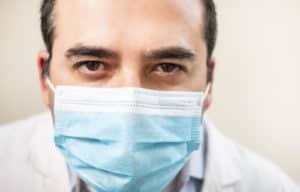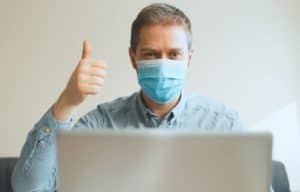
To avoid another round of revenue-busting lockdowns, you must do everything in your power to keep your staff and patients safe while providing treatment. Coronavirus particles can live for hours—and in some cases, days—on surfaces and in aerosols, and not just in your clinical areas. To protect your patients and your practice, your staff must become infection-prevention experts in the areas of cleaning and disinfection.
Understanding and adhering to proper sanitation and disinfection protocols is paramount to ensuring your practice and stays open. Here are recommendations from infectious disease practitioner, Javeed Siddiqui, MD, to prevent spreading infections including COVID-19.
Study Disinfection Agent Risks and Side Effects
Typical disinfecting agents you might use include bleach, hydrogen peroxide, and ammonium salts. All cleaning agents have some sort of risk for patients and staff, including asthma, skin irritation, inhalation issues, and more.
You must be diligent in reading all recommended remedies carefully and following accepted sources such as the Centers for Disease Control (CDC) guidelines. Misinformation is rampant. For instance, some groups are suggesting that patients rinse or gargle with a hydrogen peroxide solution but this is an irritant that destroys teeth enamel.
But there is one often-overlooked disinfecting agent that doesn’t have those toxic side effects—hypochlorus acid. A weak acid similar to that of citrus juice, hypochlorus acid is 70-80 times more efficient at killing microbial pathogens including viruses than chlorine bleach. Hypochlorus acid can oxidize pathogens in seconds, in contrast to bleach, which could take up to 30 minutes. Plus, hypochlorus is safe—it will not harm the eyes or skin, and it’s completely harmless even when ingested.
Fit Disinfection into Scheduling
Increased cleaning and disinfection will take a significant amount of time each day. Make sure you have enough staff to perform clinical duties, meet patient needs, and accomplish additional cleaning duties without running behind schedule.
When you design your infection control protocols, determine how you will handle staffing and cleaning if someone is diagnosed with COVID-19 after being in your practice. Develop guidelines for isolating staff who were exposed to the coronavirus patient. Include in your plan how you will adjust your patient and staff scheduling and if needed your practice hours.
Establish a Detailed Disinfection Plan
You’ll need to work with your practice staff and leadership to set cleaning parameters and assign responsibilities. Define what you’ll be cleaning, when, how often, and what disinfectants you’ll use.
Then educate your staff on your guidelines. Here are some items to include:
- Disinfection Protocols: Provide training to all cleaning staff on-site on performing cleaning tasks
- Chemical Risks: hazards of the cleaning chemicals used in the workplace in accordance with OSHA’s Hazard Communication standard.
There’s more advice from Dr. Siddiqui that will keep your office clean and open through the coronavirus second and third wave. Watch Video Now!



